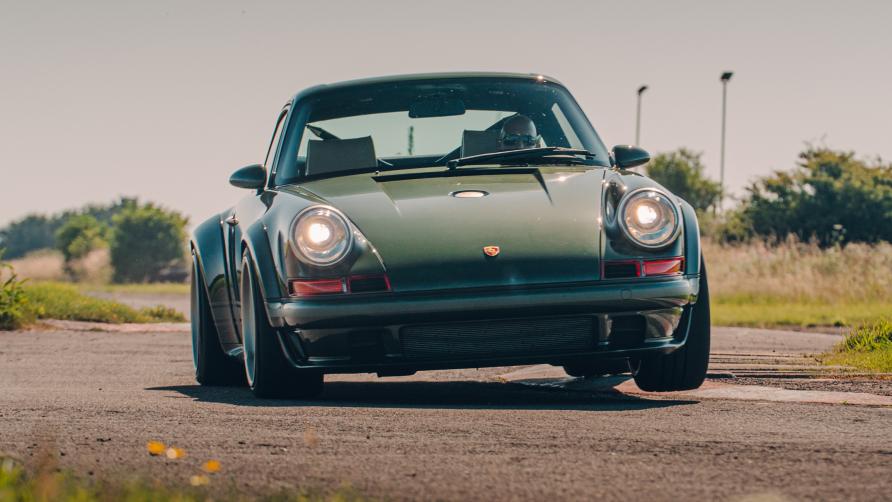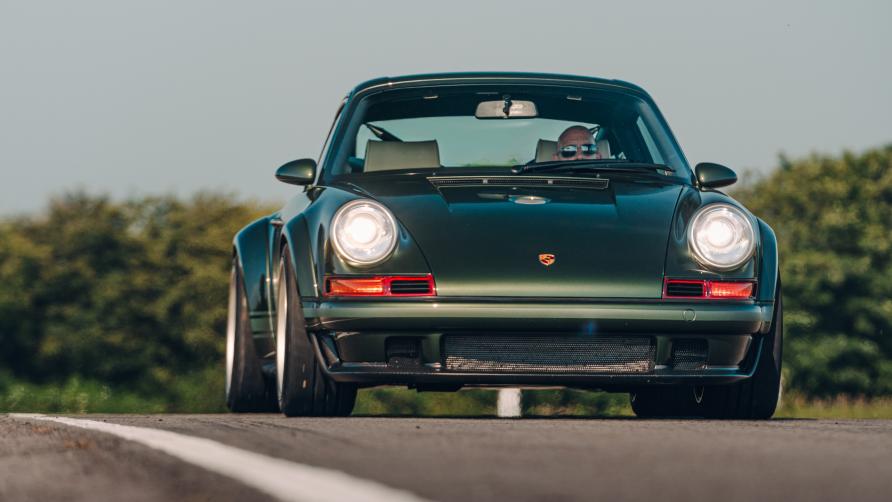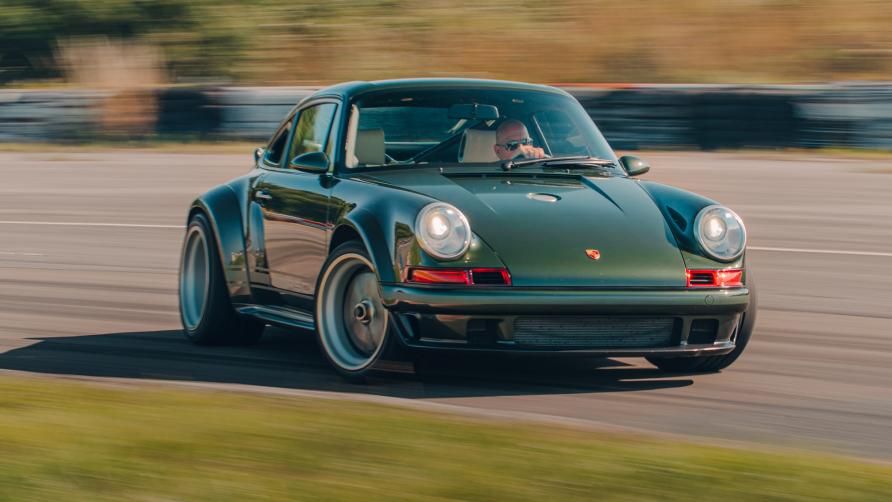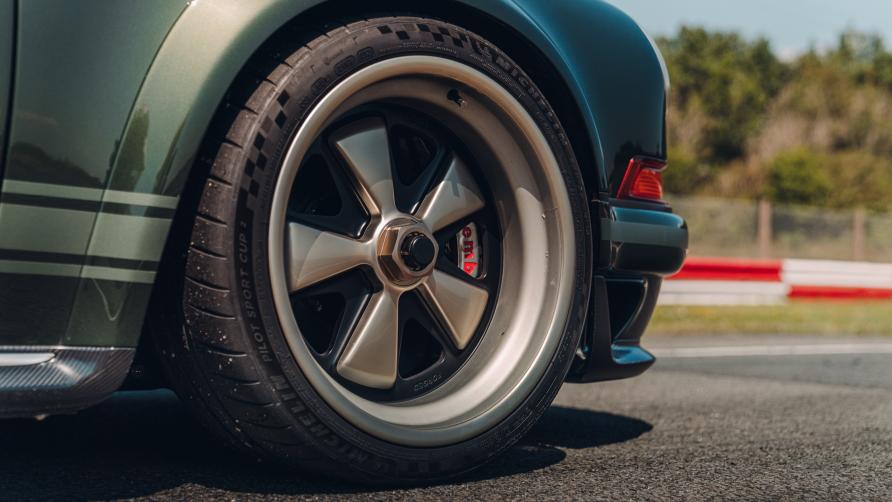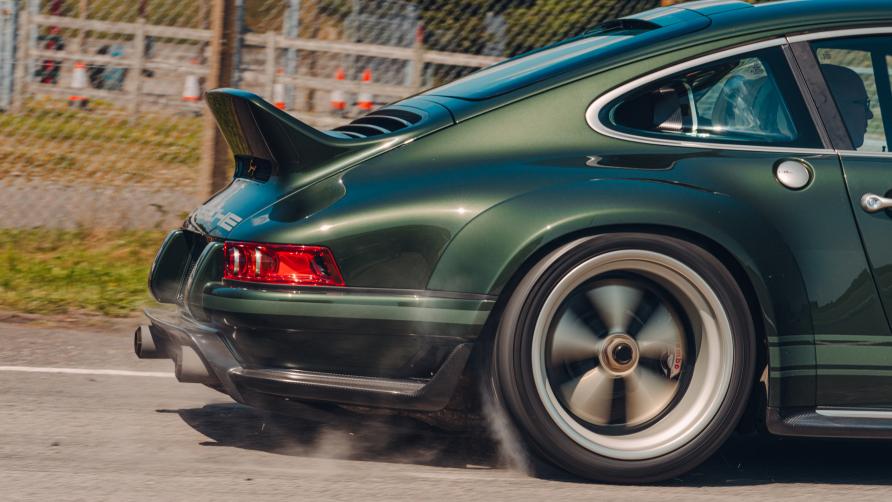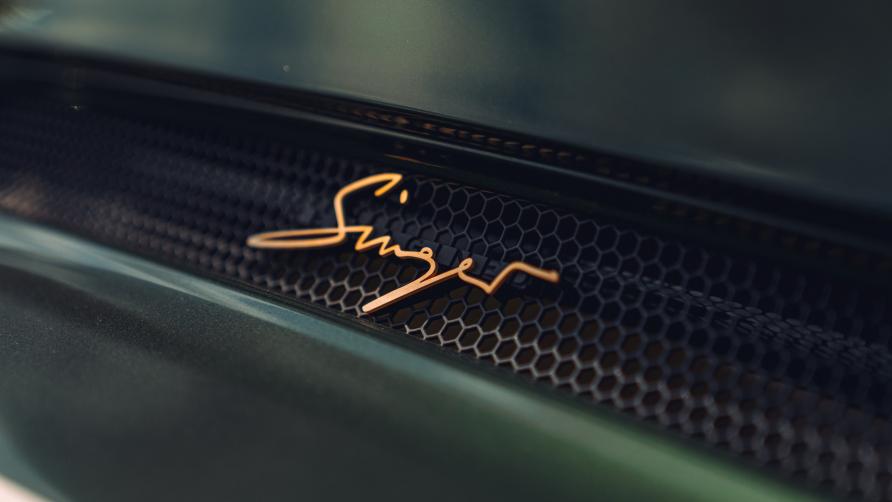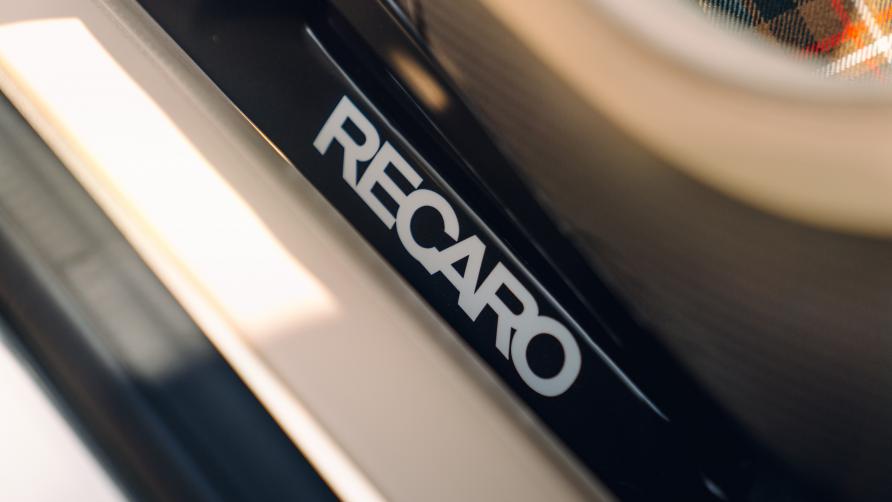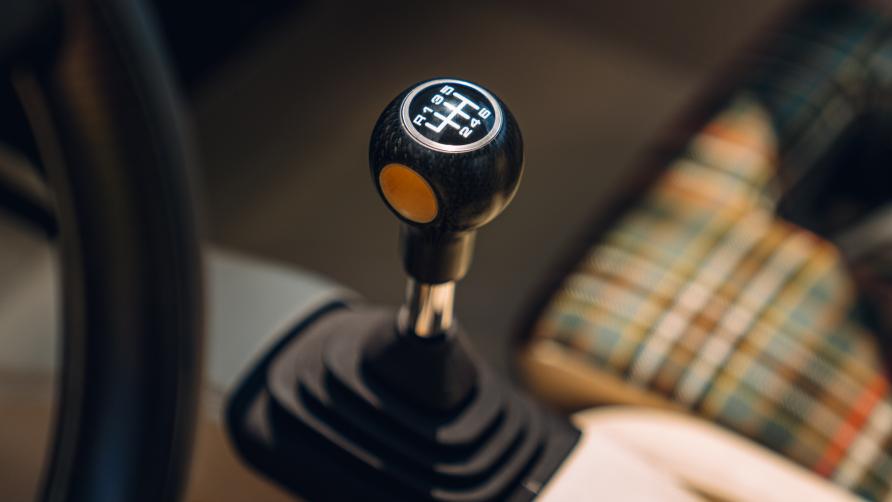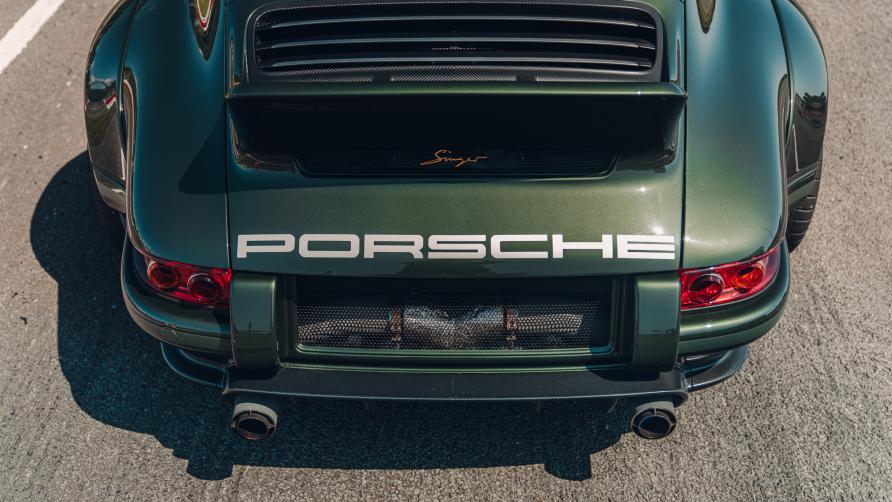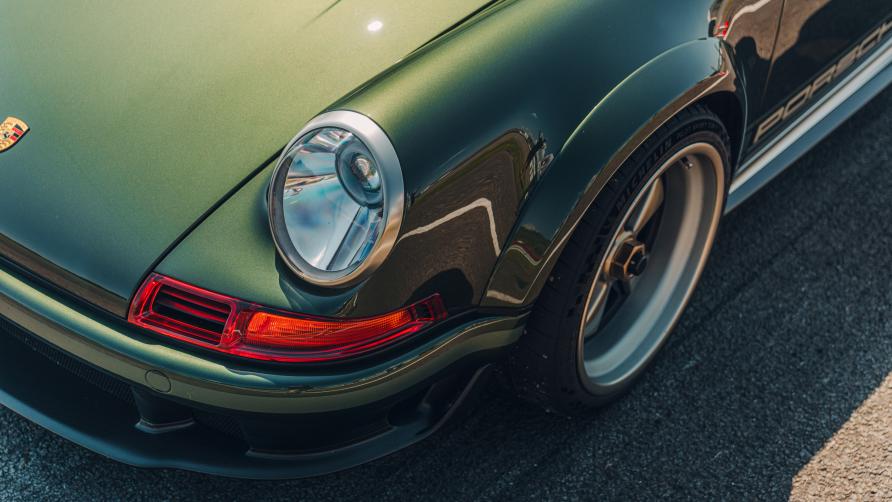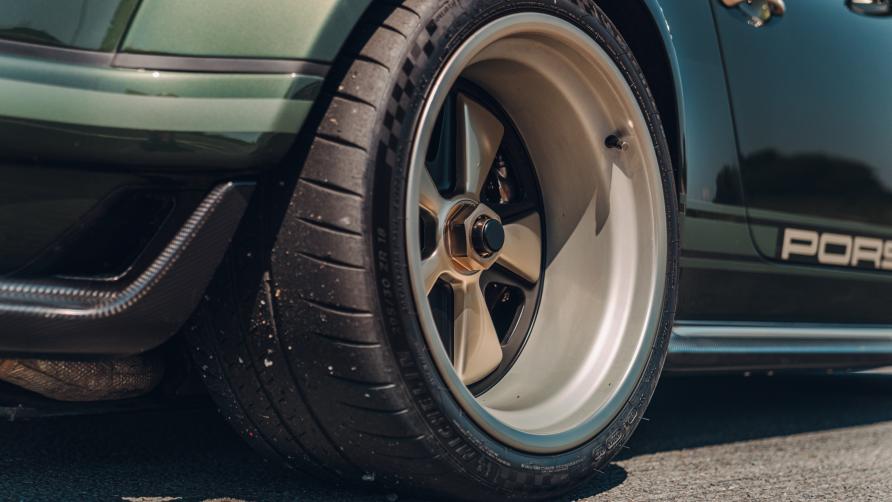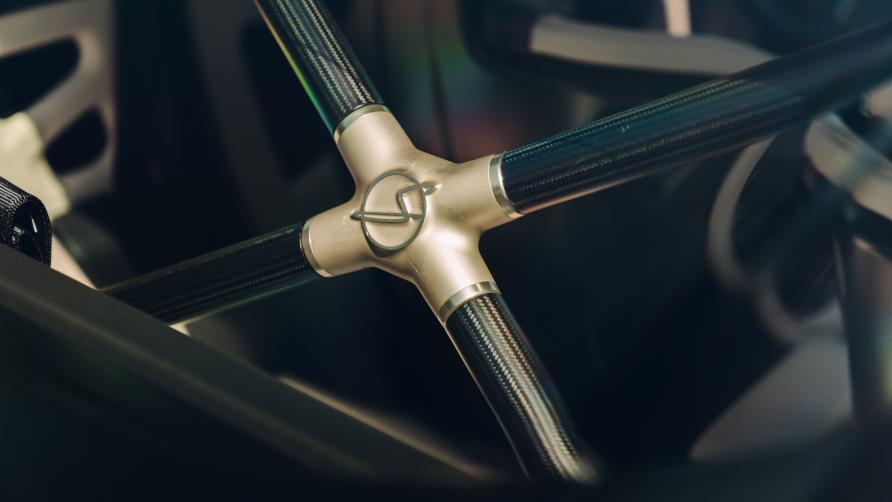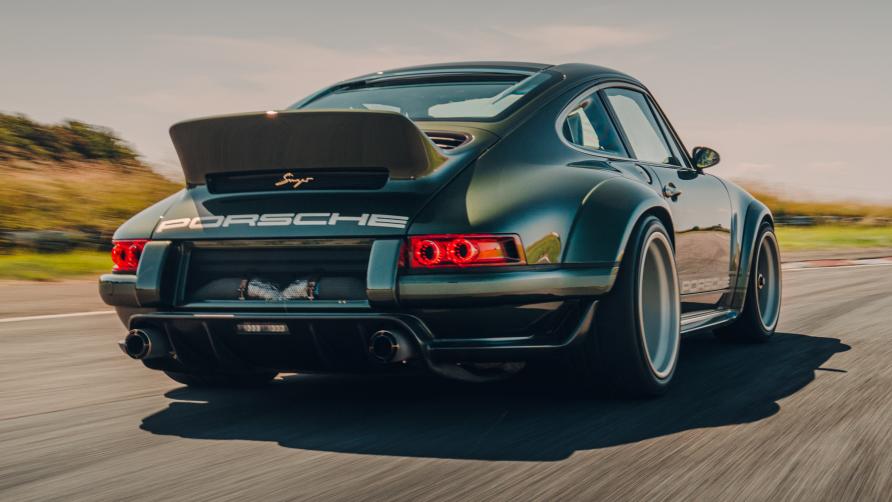Porsche 911 Reimagined by Singer - the Dynamics and Lightweighting Study
Porsche 911 Reimagined by Singer - the Dynamics and Lightweighting Study
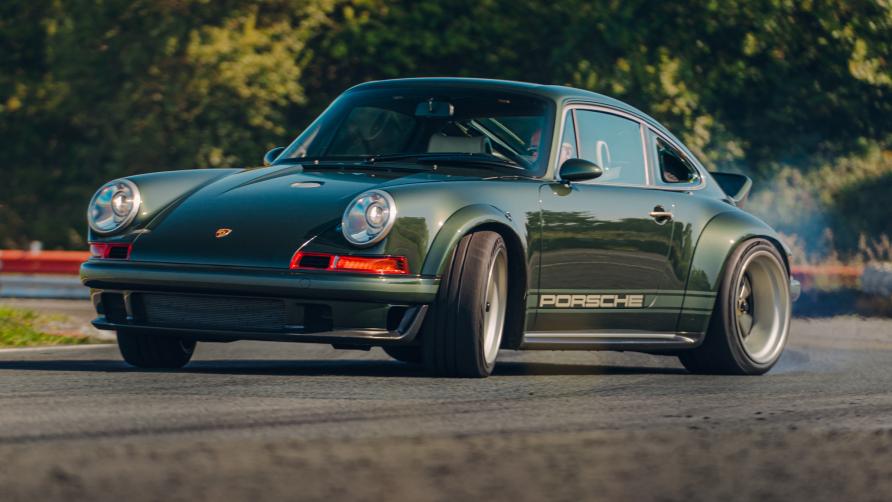
OVERVIEW-WHAT IS IT?
Utterly mesmeric. An air-cooled flat six behaving with such savagery and intensity and reaction and precision – and delivering such an intoxicating noise – that you drive it and are instantly convinced this is it, the zenith, the best road-going internal combustion engine mankind has yet devised. There’s been a few of them over the years. A refresher on any of them (the V12s in the Ferrari F50 or McLaren F1, the straight six in BMW’s E46 M3 CSL, the 4.5-litre V8 in the 458 Speciale, the Lexus LFA’s V10, perhaps even a four cylinder from Honda or Alfa) has you convinced that’s the one, the best of all time.
What’s not in doubt is that the new flat six in the back of the DLS is right up there, alongside any of those above (not to mention one or two flat sixes Porsche themselves have developed). But Porsche couldn’t do what Singer has now done. It abandoned air-cooled engines when the 993-gen 911 died 25 years ago – too costly to get more power and efficiency from them. Singer has applied the cost.
The DLS is what happens when F1 technology and process is applied to a Porsche 964 – not just to the engine, but to every single aspect, right down to the mind-boggling minutiae. Singer’s reputation for detail precedes it, now it’s worked with Williams F1’s Advanced Engineering business and a host of other top drawer suppliers and people – one of my favourite facts is that two genuine Porsche legends, engine guru Hans Mezger (who sadly died last year) and legendary engineer Norbert Singer (yes, that’s where the name comes from) both consulted on the DLS. This is a Porsche 911 turned up to, well, 11.
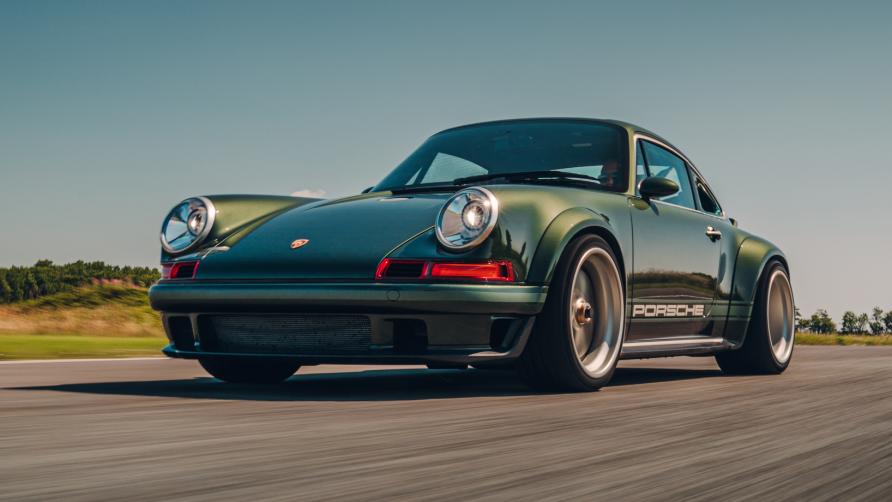
TALK US THROUGH IT.
This can’t be fully comprehensive, or you’d be reading War and Peace, but let’s stick with the engine for now. Heat management is harder with air-cooled engines. Without a jacket of water being pumped around, they’re lighter and more compact, but the big fan on the back of the engine can’t blow enough air to take all the heat away under hard use. On road-going engines, Porsche never dared fit more than two valves per cylinder – more air speeding through the engine and heat soon builds up and eventually stuff starts melting. To combat that you need to throw more fuel at it, and more exotic materials. It’s infinitely more complex and nuanced than we’ve just described, but the DLS runs on throttle bodies with twin injectors per cylinder and four valve heads. The valves are sodium filled titanium, the exhaust is Inconel and titanium, the fan is made of magnesium. So’s the housing it spins in.
In order to improve weight distribution and destress the engine, Singer has fitted a large capacity lithium ion battery under the bonnet to run the aircon and the hydraulic power steering. Neither draws power direct from the engine and in fact the alternator only charges when the flat six has spare load i.e. isn’t under hard use. The intention is that there should be nothing between you and getting absolutely everything from a naturally aspirated motor that revs to 9,300rpm and appears able to caress every single nerve-ending you possess.
At its heart the chassis and subframes are the same. But the DLS is 60 per cent stiffer. Not only has a 40mm FIA roll cage been (mostly) hidden in there, but the carbon fibre body panels are structural, adding rigidity. And Singer has arrived at the same front axle solution as Porsche themselves.
This, like the latest GT3, features double wishbone front suspension, improving turn-in, grip and precision – handy when the rear axle is a fulcrum, with the engine behind levering the front up.
Something Singer has managed to combat: by reducing the gearbox casing it’s been able to shunt the engine forwards a couple of inches. Here’s another telling detail: the dampers are from Exe-TC, the same firm that supported Seb Loeb for most of his WRC championships, which is indicative of how Singer envisages this car. It’s not a locked down racer, but is designed to be usable, comfortable.
And then there’s the aero. The whole car has been subjected to a full CFD (Computational Fluid Dynamics) program. Apparently bar a bit of added stability, the ducktail spoiler on the back of the famous 1973 Carrera RS didn’t really do much. In order to make it properly effective the roofline has been dropped 20mm. It’s disguised by a slender bridge spoiler which also serves to channel air down the plexiglass back screen and on to a ducktail that is 22mm taller, more upright and has a built in 5mm gurney flap. That’s balanced out by a front splitter and clever underbody aero.
I could go on – the lengths that have been gone to here are ridiculous. But look at it this way. The diligence and care with which Singer has always handled the 964's cosmetics, the truth contained in ‘reimagined’, has now been applied to the engineering. In the words of Singer’s founder Rob Dickinson the plan was “no holds barred, how great can an old air-cooled 911 be?”.
AND WHAT’S THE ANSWER?
Utterly magnificent. From start to finish, it’s endlessly absorbing, emphatically not a car that needs to be going fast to be appreciated. The process of snicking a gear in the Hewland six-speed manual. Of lifting the hefty clutch and getting rolling. Of feeling the way the rally-spec dampers cushion the road yet communicate the surface texture. Of letting the engine start to climb. You get all this and more at low speed, it’s an indulgence from first to last.
But the really clever stuff happens when you’re going faster. Open the taps in third, and the response is so instant, so impactful in a car weighing so little, that it’s an overload the first few times. Everything happens simultaneously: induction air is gulped down, the rear squats, the seat pushes into you, the speed starts climbing. Stick with it and the noise, almost all induction rather than exhaust, becomes the main event. It is glorious. So present, unfiltered and yet tuneful, so motorsport. It feels, sounds and behaves like a race engine. The revs rise and fall in an instant, yet somehow every heel ‘n’ toe downshift is perfect. I did at one stage check if there was a rev blip backing up my footwork. There wasn’t, the pedals just make it easy.
Weighing less than 1,100kg (down near 1,000kg if you do without the noselift, air con and subwoofers of this car) the DLS is very, very fast, but beyond Williams’ calculations that it’ll do about 338 kph, Singer has no idea what the acceleration might be. It’s irrelevant. They know it’s fast and for a car that’s intended to celebrate driving, that’s enough.
Likewise, it doesn’t seek to fix the 964's handling traits, so much as make them more reassuring and flattering. Lift off as you turn in and the tail moves quickly but progressively. That famous characteristic is present and correct, but now you have a choice. With the super accurate throttle you can choose to exploit that, in which case you’ll discover the DLS’s chassis has a drift sweet spot a mile wide. Or you can work both axles more evenly, in which case what’ll surprise you is just how confident you feel in the front end and how nice it is to have steering with actual feel and linear behaviour that isn’t super sharp just off centre.
Go in to a second gear corner on a balanced throttle, nail it and it will be the front wheels that yield first, skating into understeer, but that’s what an old 911 is all about – understanding the dynamics and balance of the car and then getting the best from it. The CCM-R Brembo brakes are amazingly potent, its performance and speed and grip are bang up to date, but the underlying chassis traits are 30 years old.
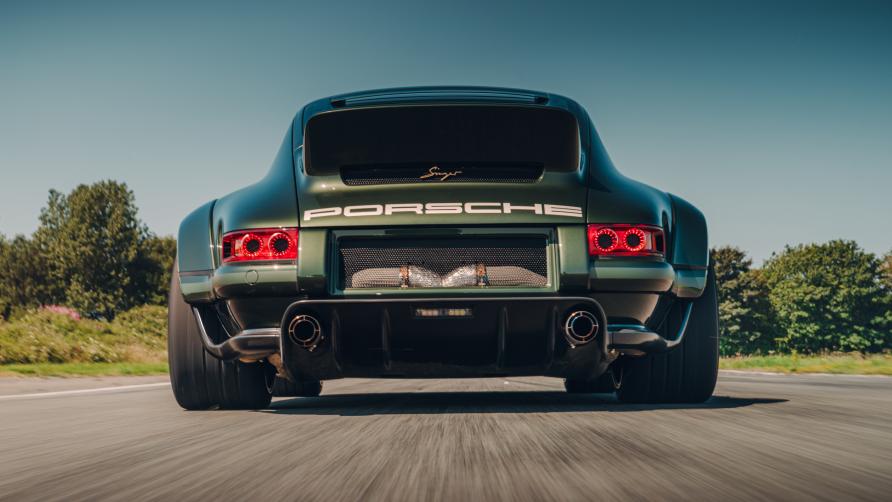
AND THAT’S A DRAWBACK, RIGHT?
No, there’s nothing wrong with that. It’s not as clean and honed and ruthless as a modern supercar or hypercar, but it demonstrates (as so many restomods do) why we love cars like this. It’s not locked in a numbers battle that has so little relevance to the actual experience of driving. Instead this is an old 911 living its best life.
WHAT IS THE VERDICT?
“Singer's Dynamics and Lightweighting Study is indulgent, rewarding and intense, an even bigger step on from one of their normal restorations than we’d expected”
Singer's Dynamics and Lightweighting Study is indulgent, rewarding and intense, an even bigger step on from one of their normal restorations than we’d expected. But even over and above Singer’s remarkable usual strengths, the engine stands proud. Not just the heart and soul, but the making of the DLS.
Yes, it’s a vast, titanic amount of money, but is this intrinsically worse value than a Bugatti Chiron or a Rimac Nevera just because it’s slower? Because, I’ll tell you what, I’d rather drive this on a good road or track than either of them. This is Porsche’s 911 Reimagined by Singer, now reimagined again. A car that revels, that glories in driving and nothing else.
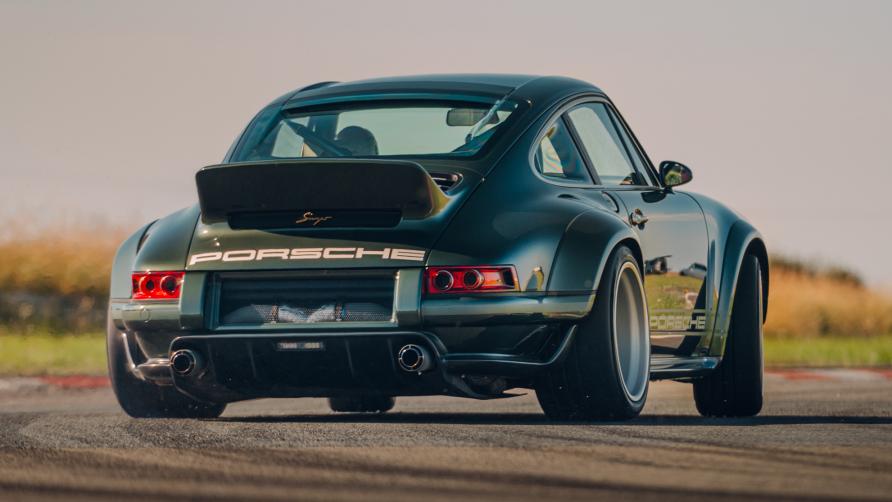
DRIVING-WHAT IS IT LIKE TO DRIVE?
Let us put it this way: the driving experience starts way before you even get behind the wheel. Because you can’t walk up to the DLS and just get in. You stand there, captivated by the perfection of the stance, of those broad arches, the way the wheels are revealed at the back, the ducktail. It fires you up. The door is heavier than you expect, the gorgeous Momo steering wheel doesn’t adjust, the one piece seat only slides forwards and back. But you’re fine. The whole sense of anticipation dominates.
You turn the key, the needles flick, there’s electronic ticking and a mechanical click or two from behind. Another twist and an angry, vocal bark of revs, settling into a tight growl. The pedals have more weight than you expect, the steering too, but once up and running they ease and that ceases to be a concern. The gearlever, raised up on a plinth to reveal the workings beneath also moves quickly, easily and neatly through the gate. It’s the tactility and texture of these controls that makes simply operating the DLS a delight.
IS IT CALM ENOUGH TO CRUISE?
Drive without intent and it’s perfectly tolerable. The 4.0 is settled, there’s no hiccups or histrionics at low revs, you just maybe need to raise your voice a little to overcome it. It pulls cleanly. A hifi is available. It’ll need to be astounding for you ever to bother with it. Open the taps and you won’t be able to speak. Not just a physical thing, but your emotional response to what’s happening will stop all noise bar a curdled ‘gnrrr’ escaping your lips. You’ll do the yelping and hollering when you lift off, giddy at what’s just happened. I know this because that’s what happened to everyone who travelled with me in it. Grizzled film and photography guys, used to modern stuff, were dazzled by it.
DOES IT HAVE DRIVING MODES?
There’s a mode dial between the seats, which defaults to ‘Key Up’ when you start. Singer-speak for Normal. One click clockwise takes you to Sport, a longer hold to Track. You need Sport. The Bosch-developed traction and stability is quite active, but in Sport gives you some margin. It’s a little crude and sudden compared to the systems in most big manufacturer’s fast kit, but then they’re paying tens of millions for development. In Track everything is off bar the ABS. I didn’t expect to use Track that much. Ended up using it almost all the time.
IS THAT BECAUSE IT’S APPROACHABLE TO DRIVE?
It’s remarkable how usable and friendly the DLS is, and those dampers have a lot to do with it. Watch our film of it (we had the four-way adjustments in a middling set-up) and you can see the car move, absorb kerbs effortlessly, soak up punishment and regain control without the car’s balance being disturbed at all. Big shout out for the ramped up chassis stiffness here, which gives the suspension a far more solid platform to work from. There’s a bit of roll and movement, and that’s such a nice thing to have. It gives you that fraction of a second to feel the car transition, makes it less snatchy, more progressive. But behind that cushion the DLS is so well supported. I never hit the bumpstops, not hard on the brakes and turning in over a kerb or giving it the berries out of a tight corner. The brakes, incidentally, are sensational. I sometimes find Brembo’s brakes a bit wooden to use, but once into their travel these are fabulous.
ANY CRITICISMS?
It’s difficult, because what you’re dealing with here is an old Porsche that isn’t seeking to measure itself against anything else, just be the best it can be. It’s not as smooth into corners or as slicingly effortless around them as the latest from Ferrari, McLaren or even Porsche themselves, but frankly that’s not the point. It wants to act and behave like an old 911, because a) that’s what it is and b) that’s why people love them. It’s idiosyncratic, different, communicates the sensations of speed and the joy of driving better than anything else I’ve ever driven.
Those criticisms, for what they’re worth then. The traction is a bit sudden, but quite frankly the fact it has any electronic stability management on it at all is astonishing. And as a real nitpick the steering isn’t quite as nuanced, talkative and alert as a Lotus’ – although it steers more naturally and informatively than any modern supercar I can think of.
Singer’s intention was for the DLS to be all round usable, to not lose the bandwidth the 911 is rightly famous for. I think you could argue that for anyone used to modern supercars, the engine maybe comes across as a little raucous and high strung for a road trip. But would you change it? We wouldn’t – it’s the star of the show.
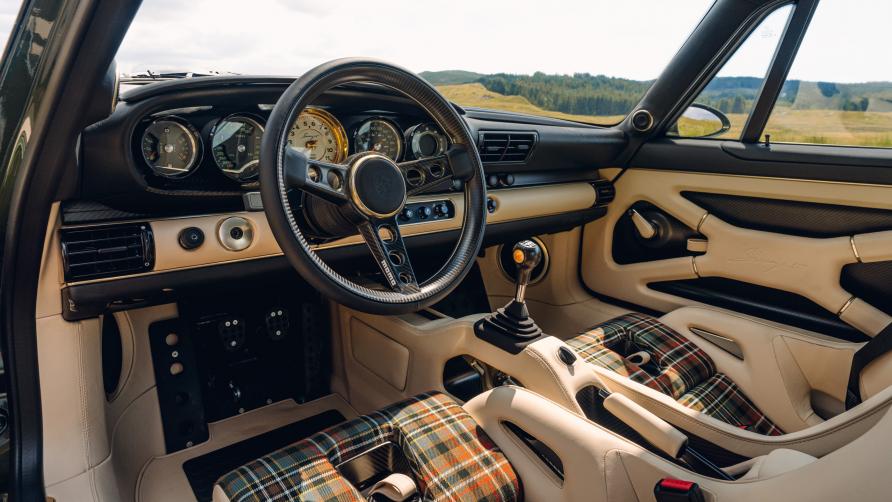
INTERIOR-WHAT IS IT LIKE ON THE INSIDE?
It is a thoroughly usable car. There’s storage under the bonnet (just be careful about fuel spillage when filling up the thoroughly reasonable 63-litre tank) and masses of space inside – although the one piece seats make it awkward to get stuff in and out of the back deck. But really it’s about the view forward, a view that encapsulates not just whatever scenery is the other side of the upright windscreen, but the dials, the steering wheel, the perfection of Singer’s attention to detail. The central rev counter is jewel-like, a fitting tribute to the engine whose behaviour it’s reflecting. Personally I find the fonts on the minor instruments a bit heavily done, but that’s literally it, a sole cabin nitpick. OK, I suppose it would be nice if the steering adjusted, but Singer can add a spacer if you prefer it more in your chest.
But beyond all this, there’s an impression you get when you open the door that’s unlike anything else. The closest firm I can liken it to is Pagani – there’s a similar sense of artistry and engineering being combined, of everything being obsessively considered and worked on, but here it’s the sympathetically enhanced retro touches that dominate. It makes you gasp when you open a door, the realisation that not being able to look at the bodywork while you drive is actually not the issue you thought it would be, because the cabin is every bit as absorbing and special.
The fit and finish is stunning, the materials, the execution, the paintwork. If you had the money for one of these, you’d look at it, realise the work that goes into it and not question the price.
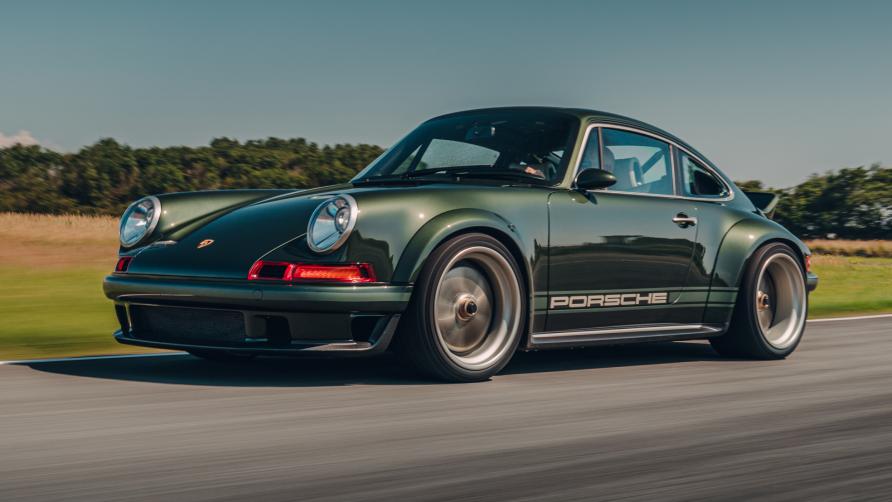
WHAT SHOULD I BE PAYING?
This is, give or take some taxes, a £2 million car (RM11m). A six month down payment on a three year loan would be, what, £350,000 (RM2m) (? The monthly repayments would be maybe £60,000 (RM352k))
No-one is going to be buying a DLS that way. Many of them will find the amount piffling. I just hope they appreciate what they’ve got, admire the skill that’s gone into its creation. Yes, it’s probably four times the price of one of Singer’s regular restorations, but only 75 are being made and the leap forward that’s been made here, the re, re-imagining of the concept, blows the word restoration out of the water. No-one has pushed the Porsche 911 further or made it more special.
This is not only a very different beast to a standard Singer, but likely a very good investment. We hate to think of a DLS being a garage queen, but even more we hate the thought of it being flipped for profit. Singer’s reimagined 911s already trade for more than they cost new. This car has been five years in development, customers are likely impatient, those that aren’t on the list or have missed out might be eager to rectify that. Well, they damn well ought to be.
